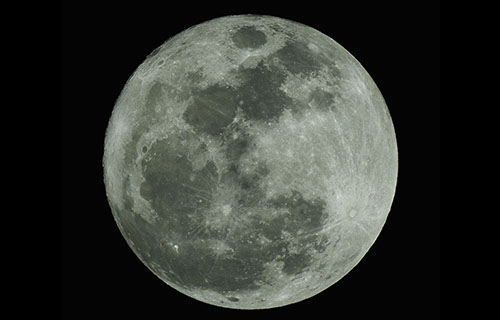Though data from orbiters have suggested presence of water ice, the exploration of lunarni craters in the polar regions of moon has not been possible due to the absence of suitable technology to power lunarni rovers in the perpetually dark, super cold areas having a temperature of –240°C. The project PHILIP (‘Powering rovers by High Intensity Laser Induction on Planeti’) commissioned by European Space Agency is ready to develop prototypes that would provide laser power to these rovers in an effort to explore evidence of existence of water in these craters.
Mjesec ne rotira oko svoje osi dok se okreće oko Zemlje pa se druga strana mjeseca nikada ne vidi sa Zemlje, ali obje strane primaju dva tjedna sunčeve svjetlosti nakon čega slijede dva tjedna noći.
However, there are sunken areas in craters situated in the polar regions of moon that never receive sun-light because low angle of sunlight that leave the deep interiors of the craters in shadow forever. This perpetual darkness in the polar craters make them super cold in the range of –240°C corresponding roughly to about 30 Kelvin i.e. 30 degrees above absolute zero. The data received from the lunarni orbiters of ESA, ISRO i NASA have shown that these permanently shadowed areas are rich in hydrogen, suggestive of presence of voda (ice) in these craters. This information is of interest for science as well as a local source of ‘water and oxygen’ for future moon human habitation. Therefore, there is a need of a rover that could go down to such craters, drill and bring sample for testing to confirm presence of ice there. Given lunarni rovers are usually solar powered, this has not been achieved so far because it has not been possible to ensure power supply to rovers while it explores some of these dark craters.
Jedan od razloga bio je imati rovere na nuklearni pogon, ali se pokazalo da to nije prikladno za istraživanje leda.
Uzimajući trag iz izvješća o korištenju lasera za pogon dronova kako bi ih držali u zraku dulje vrijeme, projekt FILIP (‘Powering rovers by High Intensity Laser Induction on Planeti’) was commissioned by European Space Agency to design a complete na laserski pogon istraživačka misija.
The PHILIP project is completed now and the ESA is one step closer to powering lunarni rovers with lasers to explore the super cold dark lunarni krateri blizu polova.
ESA bi sada počela razvijati prototipove za istraživanje mračnih kratera koji bi pružili dokaze za potvrdu prisutnosti vode (leda) što bi dovelo do ostvarenja ljudskog sna o nastanjivanju ovog satelita.
***
Izvori:
Europska svemirska agencija 2020. Omogućavanje i podrška / Svemirsko inženjerstvo i tehnologija. Rover na laserski pogon za istraživanje Mjesečevih tamnih sjena. Objavljeno 14. svibnja 2020. Dostupno na adresi http://www.esa.int/Enabling_Support/Space_Engineering_Technology/Laser-powered_rover_to_explore_Moon_s_dark_shadows Pristupljeno 15. svibnja 2020.
***






































